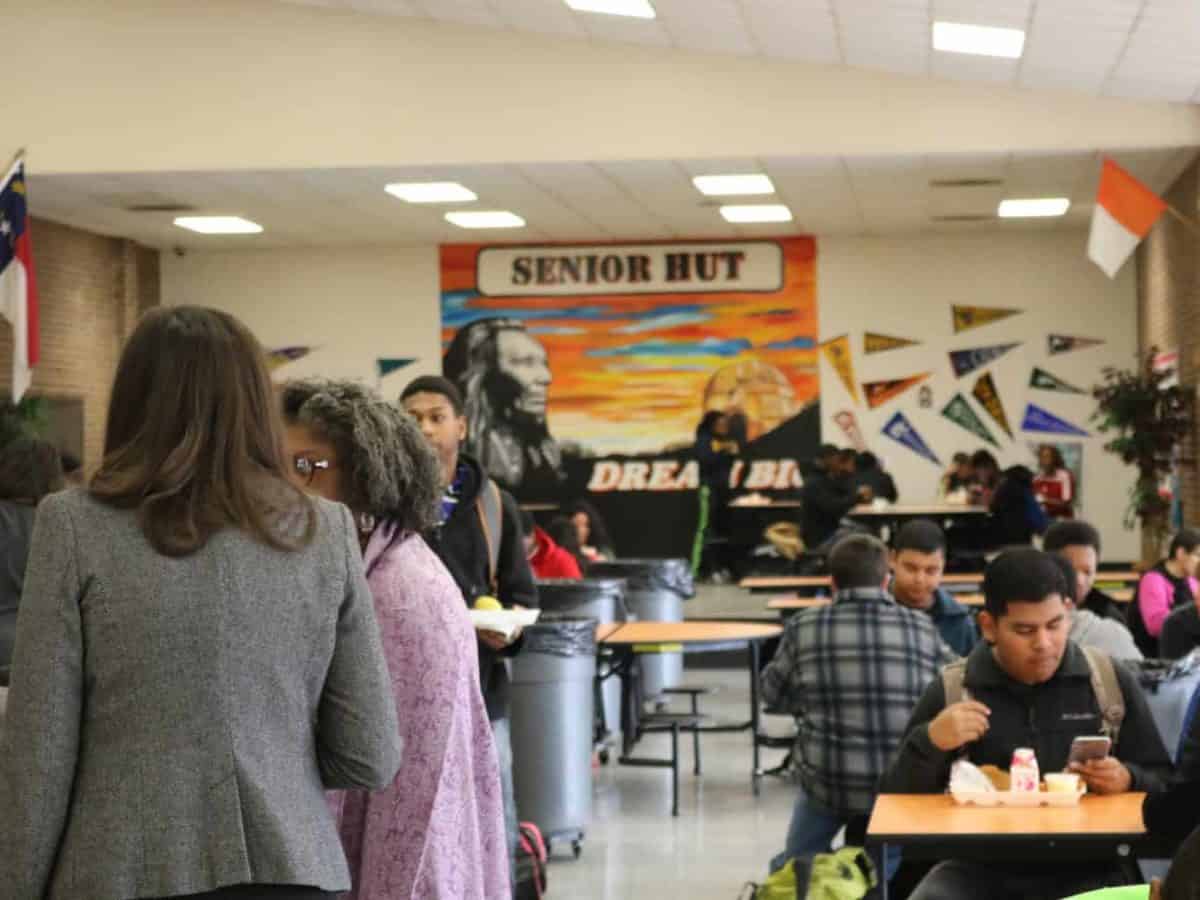

As traditional-calendar schools opened across the land, the U.S. Census Bureau distributed school enrollment data that serves as a reminder of the large size of the American education enterprise. Simultaneously, Phi Delta Kappan magazine published its annual PDK Poll showing the complexity of the issues and the attitudes of citizens on pre-K to 12 education.
The census reports that in 2016, the last year with complete data, the U.S. had more than 77 million people enrolled in its schools, an increase of 9.9 percent in 20 years. Colleges accounted for almost all of the increase. Elementary schools enrolled 36.6 million students, while high schools enrolled 16.6 million.
The census took special note of the dramatic increase in Hispanic students — up by 4.8 million from 2006 to 2016 — so now there are 17.9 million Hispanics in all levels of education. And, the census said, “The growth of Hispanic enrollment has been accompanied by a decline in high school dropout rates.”
North Carolina, which has nearly 1.8 million students in K-12, illustrates the trend toward greater ethnic and racial diversity. From the 2005-06 school year to 2015-16 school year, Hispanic students rose from 8 percent of K-12 public school enrollment to 17 percent. Meanwhile, white enrollment declined from 57 percent to 49 percent, and black enrollment went down from 31 percent to 26 percent.
To determine attitudes on diversity in public schools, the PDK Poll asked an array of questions in May to a national sample of 1,588 adults, including 636 parents of school-age children. Seven out of 10 parents said it was extremely or very important to have a racially diverse and/or economically diverse student body. Interestingly, significantly more Southern parents rated diversity of high importance than parents in the Midwest and Northeast.
And yet, the PDK survey found only one in four parents would accept a longer commute for their children to attend a more diverse school. The PDK survey also reported a wide gap between Democrats (70 percent) and Republicans (38 percent) who place a high value on diversity in schools. Black parents (72 percent) favored a mix of students much more than Hispanics (57 percent) and whites (48 percent).
The PDK Poll came up with equally complex and nuanced findings on Americans’ opinions on using public funds to support private schools. (Incidentally, the census reported private school enrollment dropped by half a million over the past decade.) The poll reported that 52 percent of respondents oppose private-school aid widely known as vouchers, with 39 percent in support.
In a commentary on the PDK poll, EducationNext, a publication that favors expanded school choice, noted that the opposition had narrowed to barely a majority over several years. In its commentary, the National School Boards Association noted the persistence of a majority opposed to vouchers, particularly when the pollster’s question mentioned religious schools. In the PDK Poll, 61 percent opposed vouchers for religious schools.
The PDK analysis noted “profound differences’’ along the lines of political affiliation and ideology on the private-school aid issue. It reported “support for public funds for private schools is 15 points higher among Republicans than Democrats, and 17 points higher among conservatives than liberals.”
There were strong majorities on several issues, with eight out of 10 respondents in favor of career-skills education in high schools. Nearly 80 percent of Americans favored public schools increasing mental health services and “after-school” enrichment to their students.
In his reflection on the survey findings, Joshua P. Starr, CEO of PDK International, observed, “This year, as in many recent years, the poll showed a wide gap between what the most strident policymakers and reformers are advocating and what the American public actually wants and believes.”
Democracy depends on an interchange between officials and constituents, with polls as a tool for collecting the views of citizens. If there is such a “wide gap,” what explains it?
Today’s fractured, polarized politics has many elected officials more focused on their own party’s voters than on overall public attitudes. In North Carolina and most other states, congressional and legislative districts have distinct partisan majorities, leaving most lawmakers without general election competition and worried first about their own party’s voters in a primary election. Thus, on a wide array of issues, educational and otherwise, Democrats align with Democratic voters’ attitudes, Republicans align with Republicans’ opinion, and it is difficult to arrive at a governing consensus aligned with overall public opinion.
Redistricting, in other words, has consequences for our schools.


